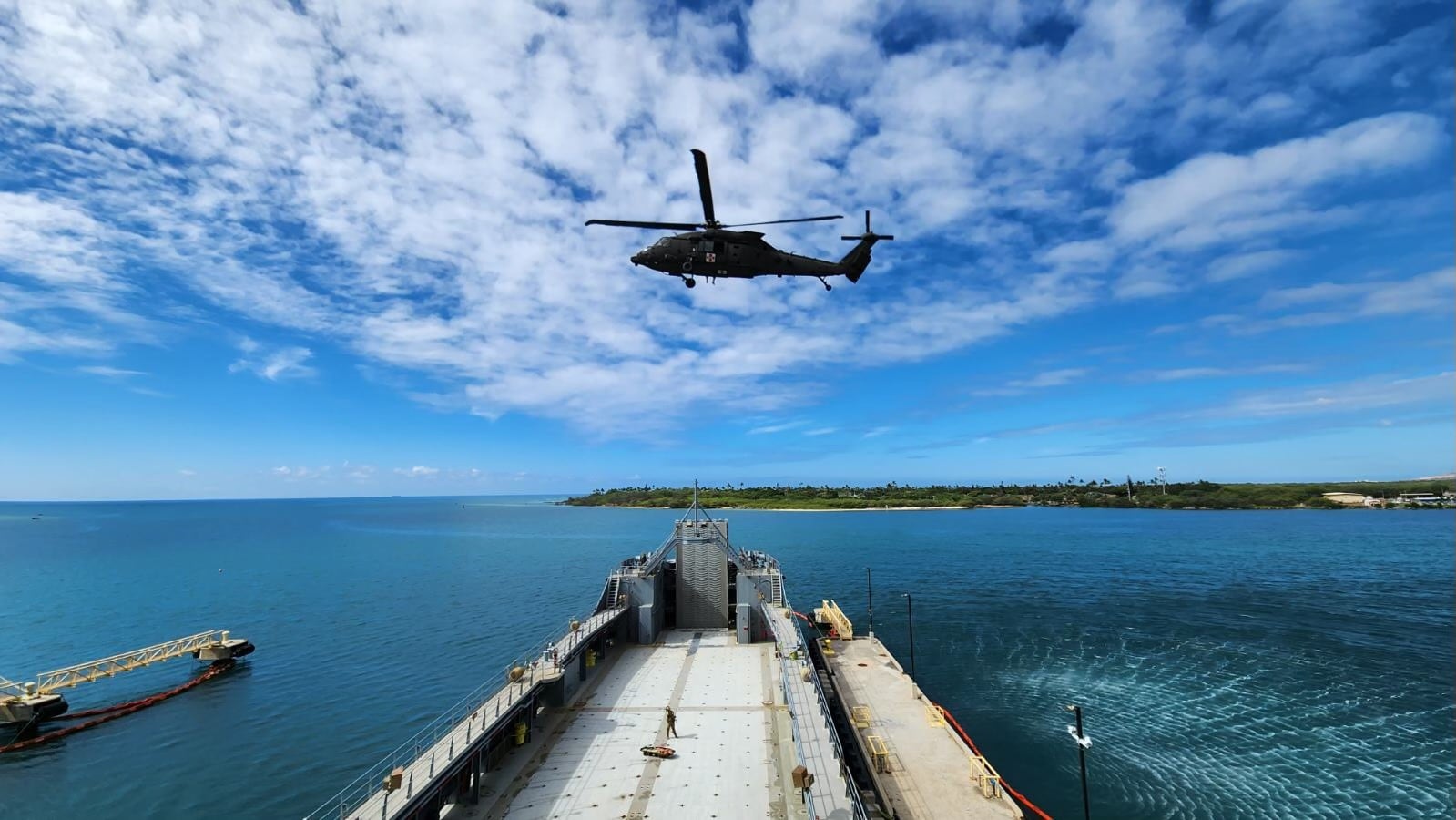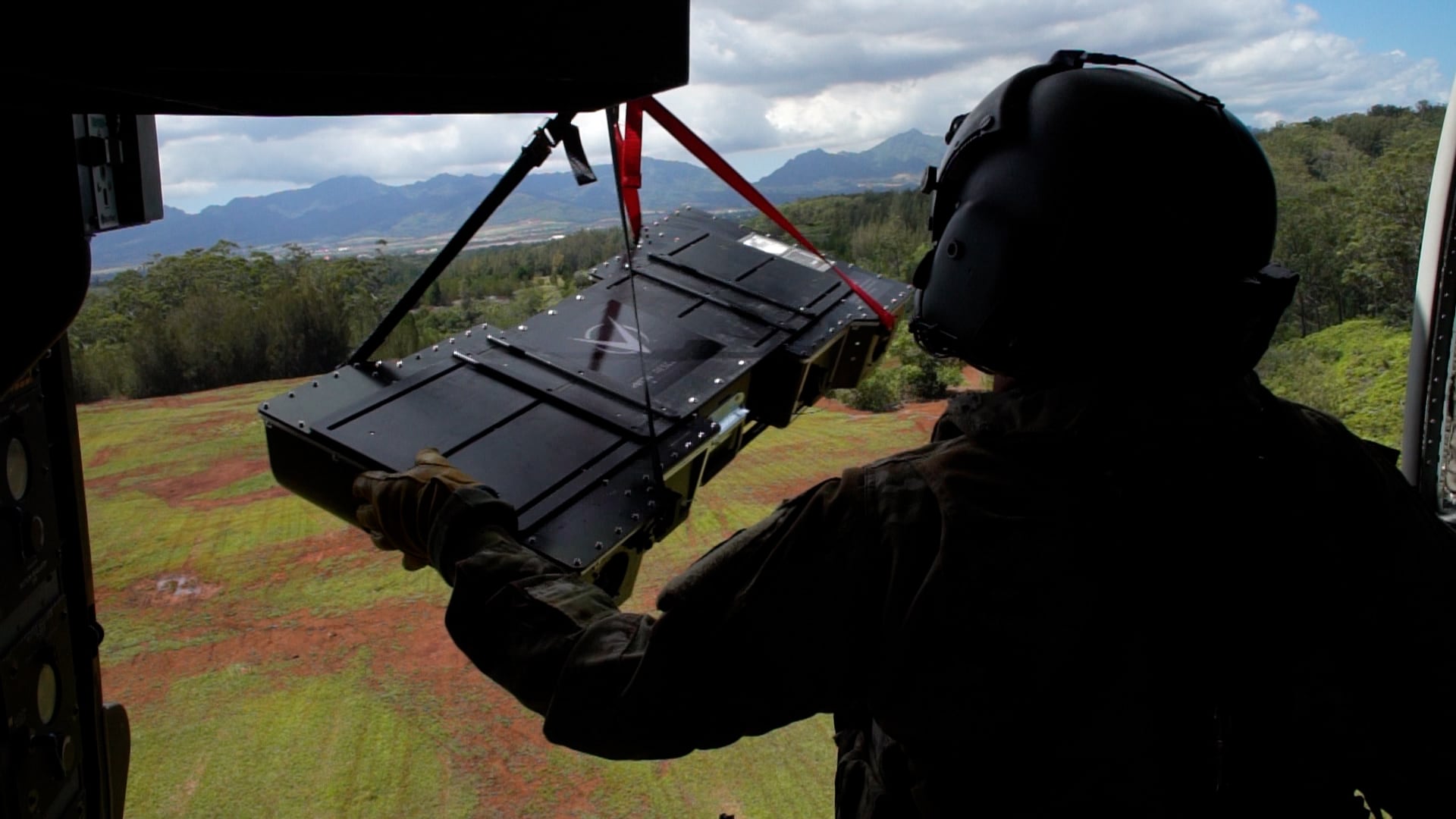Casualty evacuations during recent wars faced their own challenges — enemy fire, dust storms and austere pickup points.
But battlefields of the future look far more daunting, especially if U.S. forces face a well-armed peer adversary and must cover farther distances to bring wounded troops to critical medical care.
Soldiers and aviators with the 25th Combat Aviation Brigade are developing a new way to move casualties around the battle space using helicopters, Army watercraft, Navy vessels, advanced communications and data.
Capt. Mahdi Al-Husseini, a 25th CAB Black Hawk pilot, teamed up with Army Combat Capabilities Development Command, the Army Research Lab and Stanford University to develop the concept.
Lt. Col. Sam Diehl, 3rd Battalion, 25th CAB commander, said the recent exercise helped crews integrate resources from other services, which are vital for operating in the expanse of Pacific and island chains where the Army might conduct future operations.
“I think that in this theater we have an imperative to understand how we can most effectively apply joint resources to that problem and start with how do we apply all the Army resources to that problem,” Diehl said.
While the Navy and Marine Corps have long conducted ship-to-shore and shore-to-ship evacuation with rotary wing aircraft, Mahdi found little research on substantial, scalable efforts to move medical evacuation patients from shore to ship and back to shore or even from ship to ship.

As the Army faces potential future combat in the Indo-Pacific region, experts have warned that the prospect of peer fights would yield high casualties and units are going to be spread out over vast distances.
That’s one reason the Army is pursuing its Future Vertical Lift program. The FVL effort seeks to add rotary wing aircraft that can fly farther and faster across vast distances to deliver troops and equipment and bring back wounded.
But those aircraft are not yet available, and even when they are, they’ll need options for offloading wounded.
For two weeks in early October, Al-Husseini and troops with Charlie Company, 3rd Battalion, 25th Aviation Regiment, 25th Combat Aviation Brigade, 25th Infantry Division tested the concept, using a new experimental load stabilization device for patient transport that reduces spin, two Black Hawk helicopters, two Army Logistic Support Vessels, the Battlefield Assisted Trauma Distributed Observation Kit and Starlink satellite communications equipment.
The soldiers were able to conduct an exercise in which one Black Hawk crew picked up a medical dummy patient near Schofield Barracks, Hawaii, and dropped off the patient on an LSV 10 miles south of Honolulu, moving at 5 knots. A different medical Black Hawk then picked up the “patient” as the vessel continued moving and delivered the dummy to Tripler Army Medical Center in Honolulu, Hawaii.
The teams used the BATDOK system to track the patient’s condition and transmitted the information to the hospital using Starlink, Al-Husseini said.
That was a first step, Mahdi said. And the simplest part — two helicopters, one watercraft, one patient and one destination.
The true test, as the research continues in the coming years, is whether they can scale this and use artificial intelligence and other means to find the best matches for aircraft and watercraft for potential mass casualty events in a crowded, lethal airspace.
“It’s a complicated problem when you start adding more aircraft and watercraft,” Al-Husseini said. “How do you best move them around as the flow of casualties is changing? How do we adapt the way we’re moving our medical air and watercraft?”
Much like the Army’s future targeting unit, the Multidomain Task Force, aims to connect the right sensor with the right shooter to hit a target in real time, the casualty evacuation problem requires fast-paced responses that find the best solution among multiple options.
The idea would be like the “lily pad” concept for resupplying combat units. A series of ships would operate as collection points. By coordinating the assets available, planners could extend the chain of support, speeding up patient transport.
For example, does a nearby aircraft have enough fuel and can it reach a fast enough airspeed to get the patient to the closest ship before the patient is picked up by another aircraft to move to the shore-based hospital? How close is the second helicopter? Is the closest hospital full?
“The condition of the patient, speed of the boat, how often aircraft get used, some are busier than others, that has an impact on where we want those patients and aircraft to meet,” Al-Husseini said.
Experts often refer to the “golden hour” or the first hour after a medical emergency, in which the right care is critical to patient survival.
“The timing has to be just right, if you’re handing off a patient you can’t have one aircraft show up, drop off a patient and then another half hour later the other aircraft shows up,” Al-Husseini said. “Every delay that comes from a suboptimal dispatch, the consequence of that is paid in time of the patient not getting to the hospital.”

The algorithm and AI pieces of the project will tackle this part of the problem, he said. Al-Husseini is working in a five-year research project agreement that began this past year with one of Stanford University Associate Professor Dr. Mykel Kochenderfer, who taught Al-Husseini in his graduate coursework.
Kochenderfer is a professor of aeronautics and astronautics and director of the Stanford Intelligent Systems Laboratory. His research focuses on decision-making under uncertainty for safety critical applications.
Al-Husseini also received recent approval from the Army Research Lab to submit his process for a patent application. The software being developed could help with other areas that require rapid platform selection for emergency services or medical evacuations.
Army Times previously featured Al-Husseini in a 2021 article highlighting his victory in the XVIII Airborne Corps’ Dragon’s Lair Innovation Challenge. Al-Husseini, a George Institute of Technology graduate, developed algorithms and software along with his research partner and fellow Georgia Tech alumnus Joshua Barnett.
Their project used software paired with a camera and touch screen tablet to provide immediate feedback during pilot training. The device and software combination is now in use in some civilian flight schools, Mahdi said.
The 25th CAB group is already planning for more complex testing of medevac scenarios next year.
One event looks to see if it might be better to have a helicopter and its crew permanently stationed with an Army watercraft or Navy vessel, ready for medical needs as they arise.
Todd South has written about crime, courts, government and the military for multiple publications since 2004 and was named a 2014 Pulitzer finalist for a co-written project on witness intimidation. Todd is a Marine veteran of the Iraq War.





